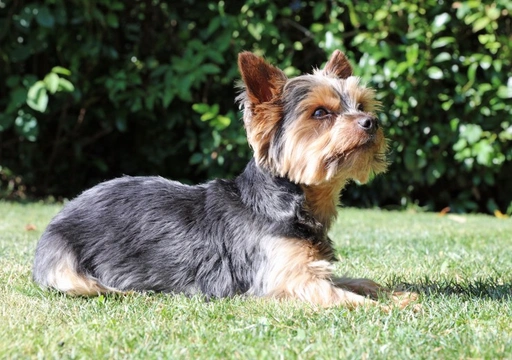
Yorkshire Terrier or Australian Silky Terrier, which is best for you?
There are many small and toy breeds around today, some are pedigree and others are hybrids, but all of them are charming canine companions to share a home with. If you are thinking about getting a smaller breed of dog, one popular choice has always been the Yorkshire Terrier. With this said, the Australian Silky Terrier has become another popular choice although less well known in the UK. There is not that much difference between the two breeds and Australian Silkies are often mistaken for Yorkshire Terriers.
Yorkshire Terrier country of origin
Yorkshire Terriers are native to the UK having first been bred in Scotland. Many breeds were used to create them which includes the Manchester Terrier, Skye Terriers, Paisley Terriers, Dandie Dinmonts and the Maltese. Yorkshire Terriers have always been highly prized both as working dogs and canine companions.
Australian Silky Terrier country of origin
Native to Australia, the Australian Silky Terrier is thought to be the result of crossing Yorkshire Terriers with Australian Terriers although there is no proof of this. The breed is much newer to the scene than their Yorkie cousins having first been bred during nineteen hundreds and they quickly became a popular choice both as companions and family pets in their native Australia.
Care and maintenance
Both the Yorkie and the Australian Silky are quite high maintenance on the grooming front because their coats are not like other dogs being made up of hair rather than fur. Their coats are growing continually and dogs tend to shed more hair in short bursts rather than throughout the year. Both breeds benefit from being brushed every day and professionally groomed several times a year which adds to the cost of their upkeep.
Both are active little dogs and like to be kept busy both mentally and physically. It would be fair to say that both the Yorkie and the Australian Silky are large dogs in little frames.
Shedding
As previously mentioned, both breeds shed hair in bursts throughout the year, but the Yorkie sheds a little less than the Australian Silky.
Training
Yorkies tend to be a little easier to train than their Australian counterparts. Both breeds are highly intelligent and learn new things quickly bearing in mind that this means both the good and the bad. Australian Silky Terriers are a little more independent by nature, but being terriers, both breeds have a strong prey drive. It's also worth noting that both Yorkies and Australian Silkies can be somewhat wilful and stubborn when the mood takes them.
Exercise
Both of these dogs may be small, but they are energetic by nature and need to be given adequate exercise to prevent them from putting on too much weight. As such, they both need to be given at least thirty minutes exercise a day for them to be truly happy with as much off the lead running around a secure garden as possible.
Children and pets
The Australian Silky Terrier is the better choice for families with children because although Yorkies are kind and affectionate companions, small children tend to worry and stress them out. Yorkies get on with smaller animals which includes cats especially if they have grown up together. However, the Australian Silky Terrier boasts more of a prey drive and therefore don't get on well with smaller animals. With this said, if they have grown up with a family cat, they generally get on well together.
Yorkshire Terrier life expectancy
The average life span of a Yorkshire Terrier is between 13 and 16 years.
Australian Silky Terrier life expectancy
The average life span of an Australian Silky Terrier is between 11 and 14 years.
Yorkshire Terrier health
Yorkshire Terriers are prone to developing more health issues than their Australian cousins with Chiari malformation syringomyelia and primary lens luxation being two of them. Other conditions that affect the breed include the following:
- Progressive retinal atrophy
- Trachael collapse
- Patellar luxation
- Eye infections
- Dental issues
Australian Silky Terrier health
Australian Silky Terriers are known to suffer from a certain hereditary health issues, but less so than their Yorkie counterparts which includes hip and elbow dysplasia which is why good breeding is so important. The other conditions that appear to affect the breed the most includes the following:
- Diabetes
- Legg Perthes Disease
Yorkshire Terrier tendency to gain weight
Yorkshire Terriers do have a tendency to put on too much weight if they are over fed and not given the correct amount of daily exercise as such owners need to keep a close eye on their dog's weight and to adjust their calorie intake accordingly.
Australian Silky tendency to gain weight
The Australian Silky is less likely to plough on the pounds than their Yorkie cousins although it's still important to keep an eye on a dog's waistline and to ensure they are being given enough daily exercise.



